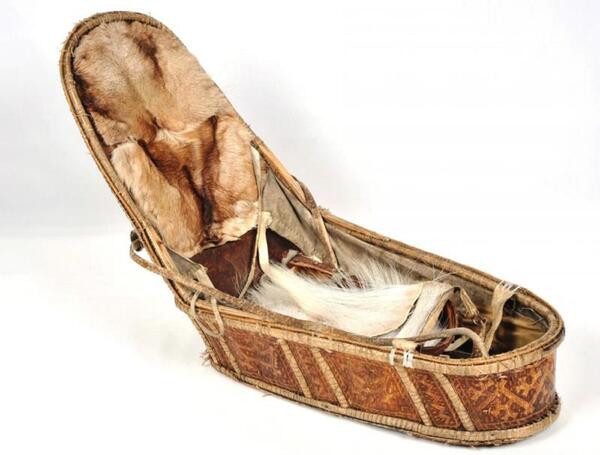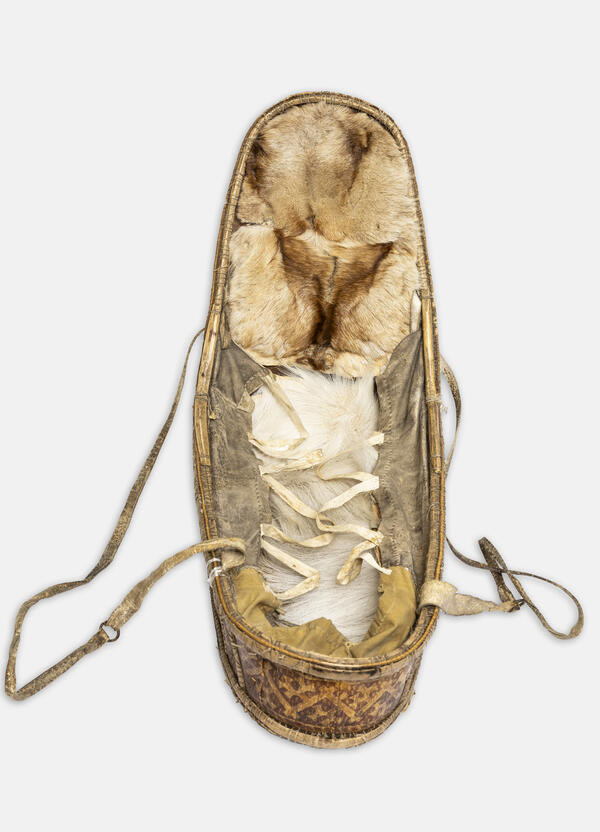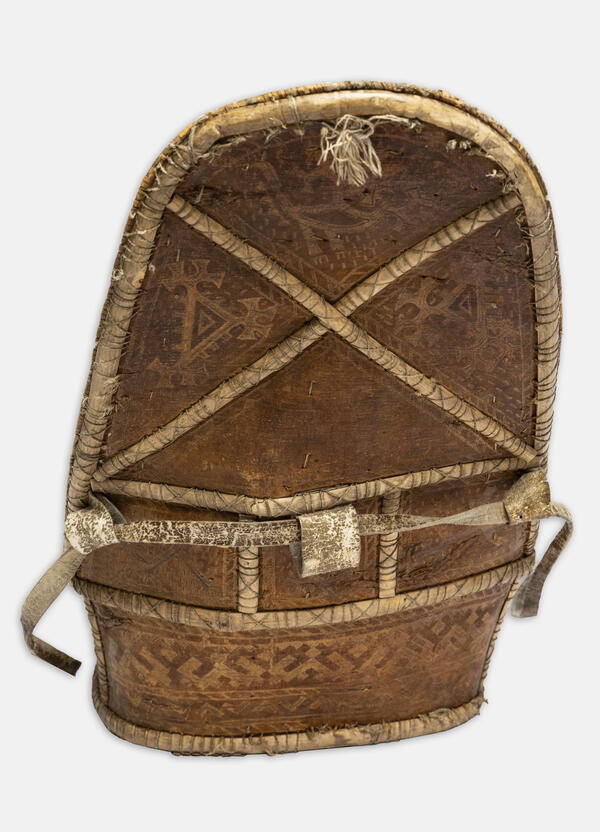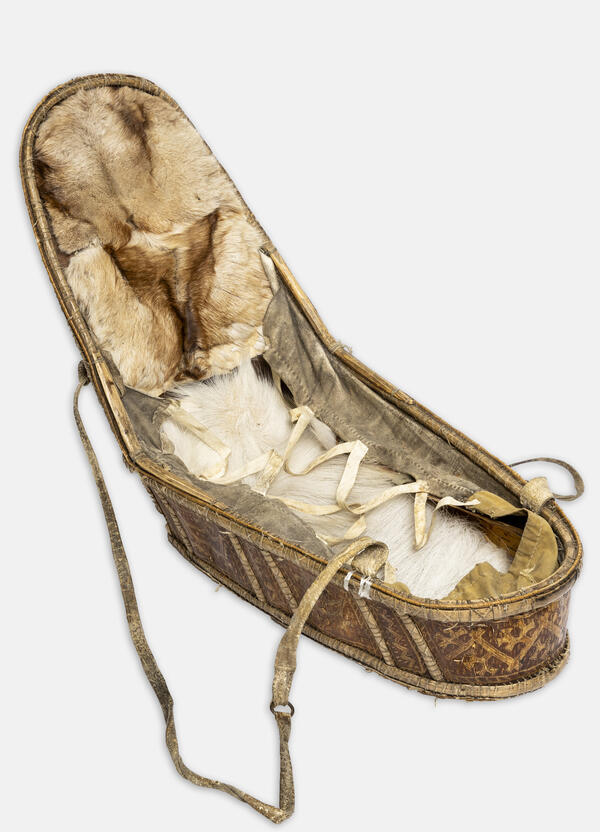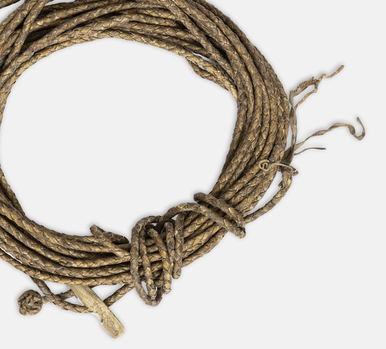Northern peoples usually make two types of cradles for children — a night cradle and a day cradle. The former is designed only for sleeping. It is an oval box with a fastening for a canopy and fixators for the baby. The latter is suitable for both sleeping and lying in a semi-sitting position during the day.
In the Khanty language, a cradle is called “ontyp”. It is suspended from the ceiling on strong straps, like the Russian zybka cradle, and in the summer — on a pole installed in the ground at an angle. It is placed so that the child can always be seen by one of the adults.
Each cradle has a birch bark lining which is replaced with a more spacious one as the child grows. It is made of two layers of birch bark sewn together. It is usually filled with birch dust collected during berry picking. Birch dust is collected from an old birch tree or stump, crumpled and placed in cotton bags. The bags are suspended inside the dwelling to dry for two or three days and then taken to the stilt barn.
As soon as the birch dust gets wet, it is replaced but not thrown away. The Khanty take it outside to the special “child’s place” under a living tree: a birch if it is a girl and a pine if it is a boy. For the child’s comfort, the back of the cradle is lined with soft buckskin.
When taken outside or brought inside the house, the cradle is carried with the head forwards. The cradle should not be passed to someone over a threshold, it is considered bad luck. Until the baby’s first teeth start to come through, the Khanty keep a knife and matches near the cradle to ward off evil forces. If a child grows up safely, the cradle is kept for the next baby in the family. If a child dies, the cradle is taken outside and placed under a tree in the forest.
The cradle from the collection of the Museum of the
Varyogan Village is made by hand from two layers of birch bark. The birch bark
sheets are lined with sarga — cedar root. The back and the walls are reinforced
with a pair of bird cherry hoops both inside and outside. They are sewn
together over the edge using decorative seams made with tendon threads. The
edge of the outer side is lined with a strip of rovduga — soft deer suede. A
strip of rovduga and tarpaulin is attached to the inner hoop, and four pairs of
leather loops are sewn to the edges. At the headboard, a deer forehead skin is
sewn to the inclined part of the back of the cradle.

